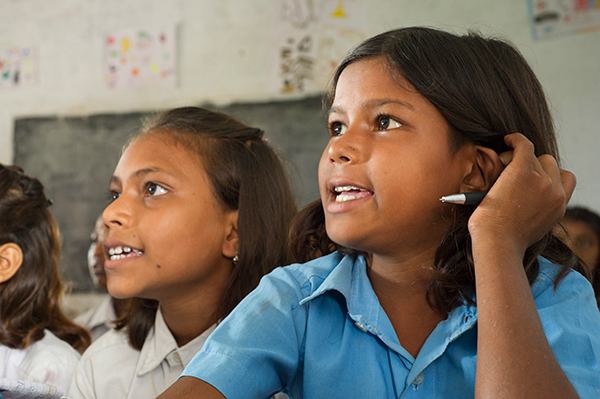Drafted in the year 2000, Millennium Development Goal 3 reads as follows:
Promote gender equality and empower women. Eliminate gender disparity in primary and secondary education preferably by 2005, and at all levels by 2015.
My first introduction to Goal 3 of the U.N. Millennium Development Goals was as a Peace Corps volunteer in Togo, West Africa. Working in the Girls’ Education and Empowerment program in 2007, other volunteers and I could literally see the stark disparities between boys and girls in classroom settings.
Until that experience, gender ratios often came across as impersonal statistics to me and I suspect I’m not alone. The numbers were abstract and their major social significance was lost on me.

In rural Togo, that quickly changed, because the numbers no longer referred to just some graph in a report. These were actual students I knew and interacted with on a regular basis. They were my helpful neighbor or the eager football player I walked by every morning. Moreover, each student was part of one of the extended families that constituted nearly everyone in the entire community from the woman selling me street food to the village chief, making it hard to miss the critical human factors at play.
Unfortunately though, the challenges were just as visible.
In 2007—seven years into the 15-year push of the Millennium Development Goals—large numbers of young girls entered primary school each year, but only a fraction of those made it through middle school. A still smaller percentage attended high school and beyond, which severely limited the potential of those being left behind both educationally and economically.
Factors like pervasive poverty and teen pregnancy contributed to dropout rates that chipped away at the number of girls getting an education. In primary schools, they easily made up half of the student body or more! But in high schools, you could sometimes count the number of female students on one hand.
Not surprisingly, this same scenario was being replicated across the region and many parts of the world.
Because of that, I think Goal 3 represented a guidepost for forward progress in admittedly difficult circumstances. It was something everyone could work toward. In the field, having that goal, however broad, was vital, because it elevated the significance of gender equality. Goal 3 underlined the fact that the development of half the population is a serious consideration, not a side issue.
In September 2015, the eight Millennium Development Goals are set to expire and a new set of Sustainable Development Goals are set to replace them.
According to the United Nations, during the past 15 years developing countries as a whole have reached their targets for eliminating gender disparities in education with noted successes throughout Asia and North Africa. Women’s participation in the workforce has increased and the proportion of women in parliaments has almost doubled.
After fifteen years, it’s important to recognize those achievements, understanding that that work is the foundation for future practitioners to build on.
And while there are obviously still persistent problems around the world, the cause of gender equality has gained momentum in recent years.
Consider that Malala Yousafzai was only three years old when the Millennium Development Goals were drafted in 2000. Today, she is a leading voice for girls’ education, reaching people in ways that the MDGs never could.
Fifteen years from now, another generation of leaders and advocates might be ready to join her. Because of that, perhaps the transition to the Sustainable Development Goals is an opportunity for governments and the private sector to renew that commitment to equality: to identify disparities at the secondary and tertiary levels of education and to address them proactively.
Personally, I’m already hopeful. When First Lady Michelle Obama recently launched her Let Girls Learn initiative, Togo was among the first to be included.
David Newstead works at Creative Associates International and often writes about gender issues. To read more from David, follow his blog at https://philosophyofshaving.wordpress.com